Let’s be honest — not everyone lives in a sprawling house with huge windows and open floor plans. Most of us are just trying to make our cozy apartments or modest homes feel a little more spacious, a little more airy, and a lot less cluttered.
The good news? You don’t need to knock down walls or spend thousands on renovations to make a small space feel bigger. Sometimes, it’s about smart decorating — the kind that plays tricks on your eyes and gives your space room to breathe.
Over the years, I’ve learned a few design hacks that make even tiny rooms feel open and calm. So whether you’re working with a studio, a small bedroom, or just a space that feels a little tight, these 15 small home decor ideas will help you stretch every inch — and fill it with light.
1. Light Walls, Light Everything
🖼️ Image prompt: Bright white living room with natural light, light wood flooring, and simple decor in neutral tones.
If you’ve ever walked into a white-walled room and thought, wow, this feels bigger, that’s not your imagination. Light colors reflect light — which makes walls appear to recede, creating an airy, open feeling.
Soft whites, creams, pale grays, or even blush tones can visually expand your space. If you’re craving color, go for muted versions — think sage green or soft powder blue.
And don’t stop at walls. Choose lighter rugs, curtains, and furniture when you can. The more light you bounce around, the larger everything feels.
2. Mirrors Are the Oldest Trick (for a Reason)
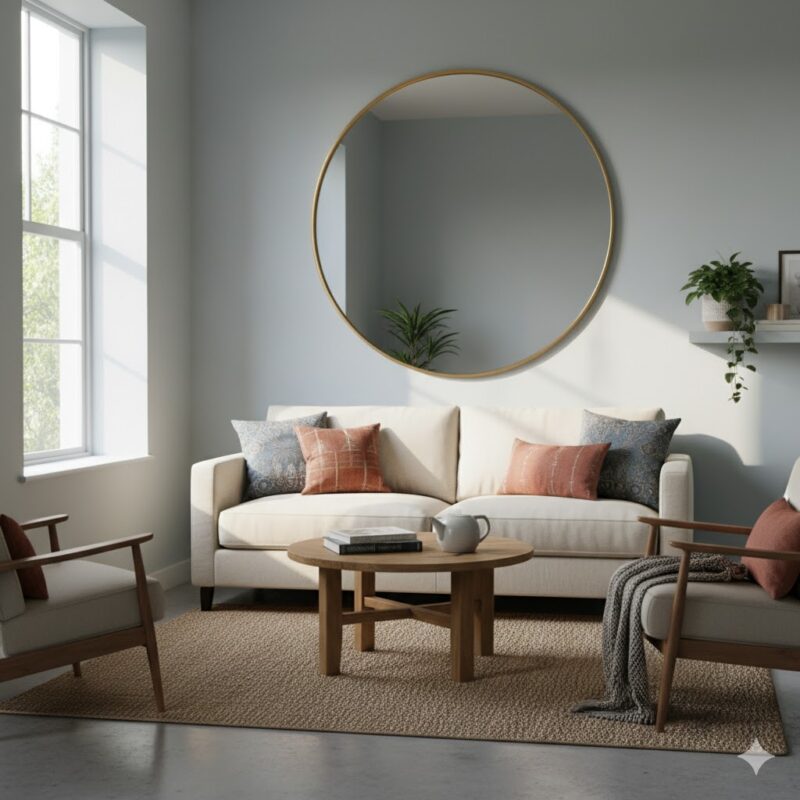
Mirrors are magic — literally doubling the sense of space and brightness.
Place a large mirror opposite a window to reflect sunlight, or use several smaller ones arranged creatively across a wall. Even mirrored furniture, like a console or coffee table, can work wonders.
If you’ve got a small hallway, hang one big mirror vertically — it draws the eye upward and makes the area feel taller.
The secret? Don’t overdo it. You want reflection, not a funhouse vibe.
3. Multi-Functional Furniture = Your Best Friend
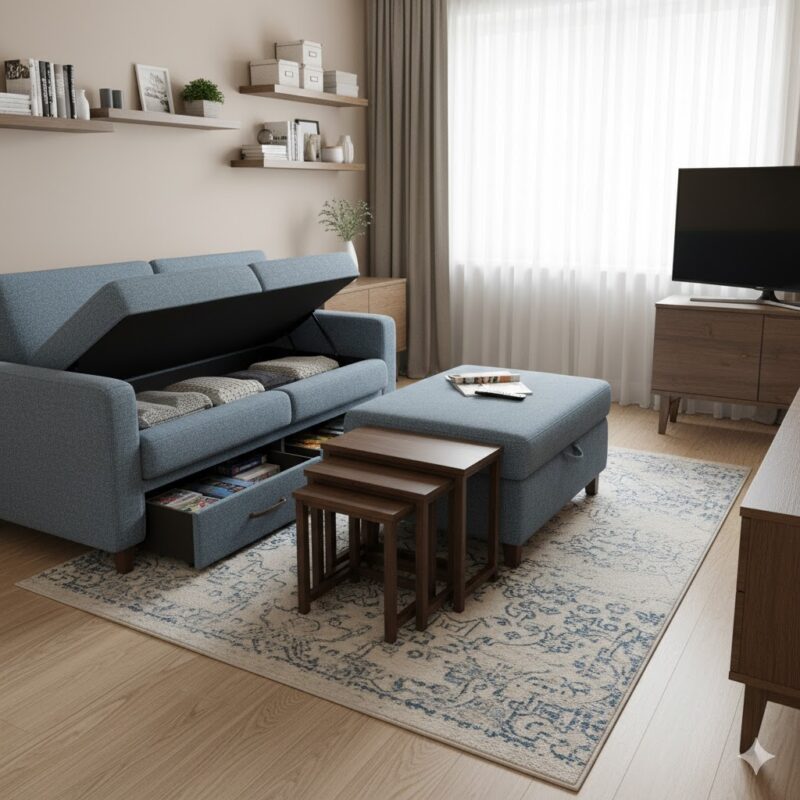
When space is limited, every piece needs to pull its weight.
Look for furniture that doubles up — like an ottoman that hides blankets, a coffee table with drawers, or a bed with built-in storage underneath.
Even a folding desk or a drop-leaf dining table can save precious square footage.
You can’t fight a small floor plan, but you can outsmart it.
4. Keep Window Treatments Simple
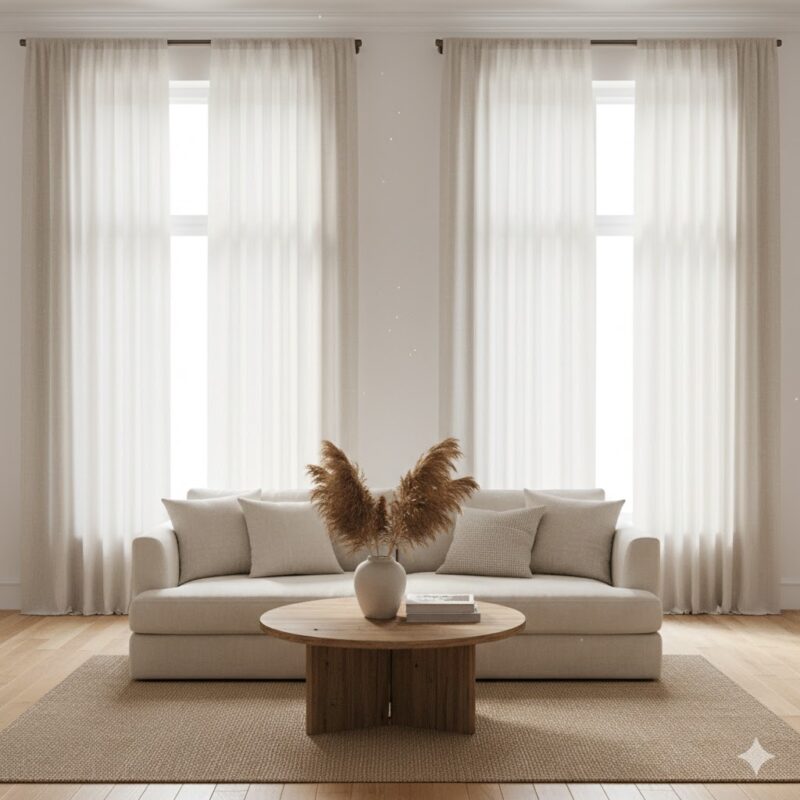
Heavy drapes make a room feel shorter and darker. Try swapping them for something breezy — sheer curtains, light linen panels, or bamboo blinds.
Hang them as high and wide as possible (above the window frame and extending out), so the windows look bigger than they really are.
It’s a tiny trick, but it completely changes how your eyes read the space.
5. Declutter Like You Mean It
🖼️ Image prompt: Minimalist living room with clean surfaces, a few curated decor pieces, and hidden storage baskets.
No matter how beautiful your decor is, clutter instantly shrinks a room.
So start fresh — one corner at a time. Clear surfaces, store what you don’t use daily, and be ruthless about what stays.
A clean room automatically feels bigger, because your eyes have space to rest.
If storage is tight, go vertical — wall hooks, floating shelves, baskets on tall bookcases. Think up, not out.
6. Use Vertical Space Smartly
🖼️ Image prompt: Small office nook with tall wall shelving, hanging plants, and art displayed above eye level.
Most people stop decorating at eye level, but the magic happens higher up.
Tall bookcases, shelves that reach the ceiling, and hanging plants pull the eye upward and make walls appear taller.
Even vertical artwork helps stretch the room visually.
Bonus: it’s also practical. You’ll gain storage without taking up more floor space.
7. Add Glass and Lucite Elements
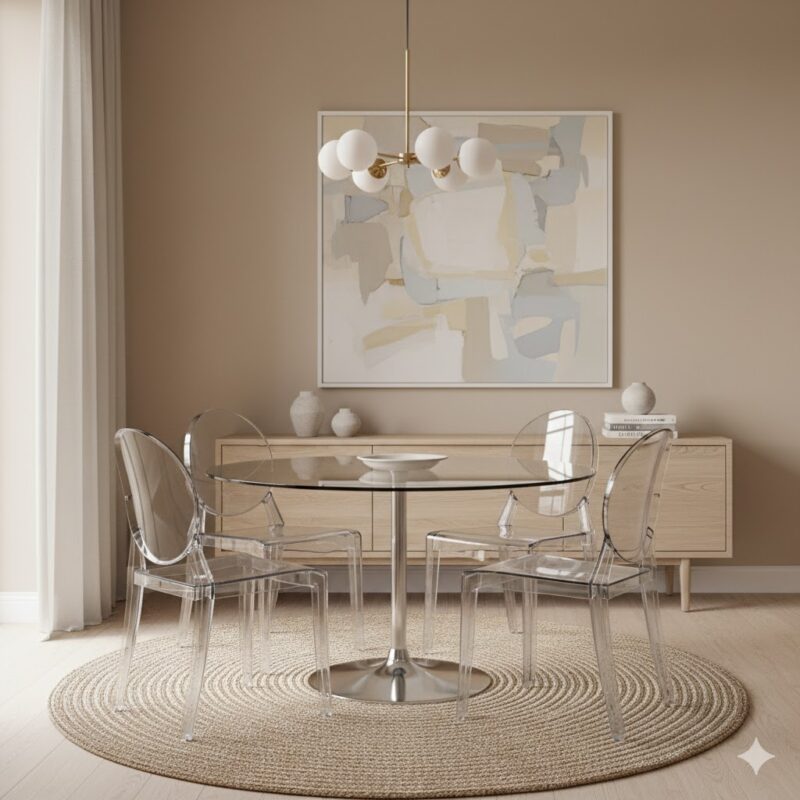
Transparent furniture is basically invisible — which is exactly what you want in a small room.
A glass coffee table, acrylic dining chairs, or a clear side table lets light pass through and keeps the room feeling open.
It’s one of those modern tricks that never fails, especially in tight spots.
Plus, it looks sleek and minimal, which fits right in with that airy, “less is more” aesthetic.
8. Layer Lighting (Don’t Rely on One Source)
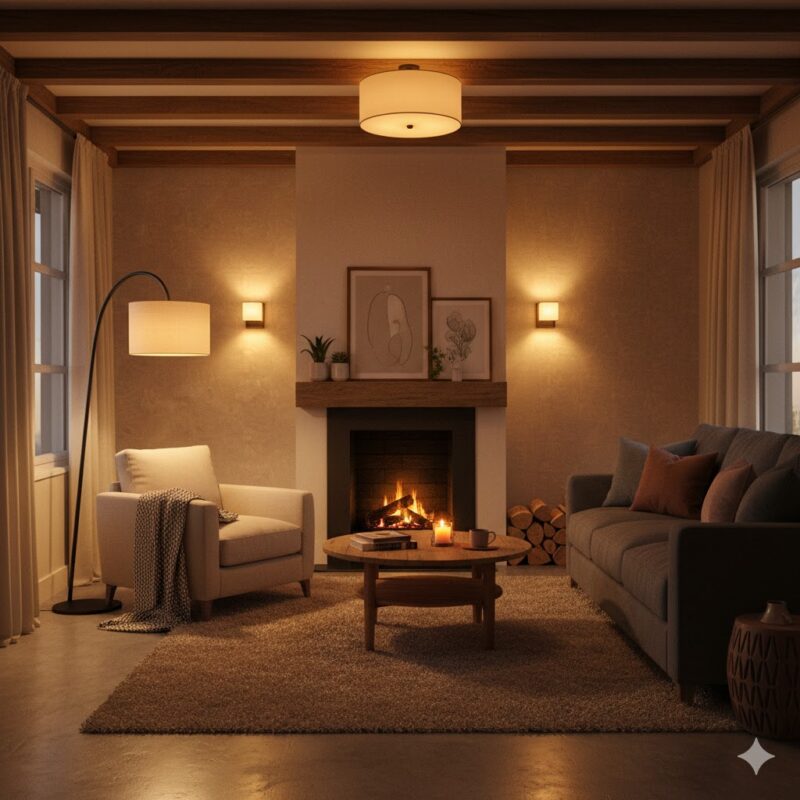
Overhead lights alone can make a small room feel harsh and flat.
Instead, layer lighting: a floor lamp here, a wall sconce there, maybe a candle or two for warmth. Each light adds depth and helps spread brightness evenly.
Mix sources — warm white bulbs for coziness, daylight bulbs near desks or reading spots.
Lighting is like contouring for your home; it defines and softens all at once.
9. Scale Matters (Go Smaller, Not Tiny)
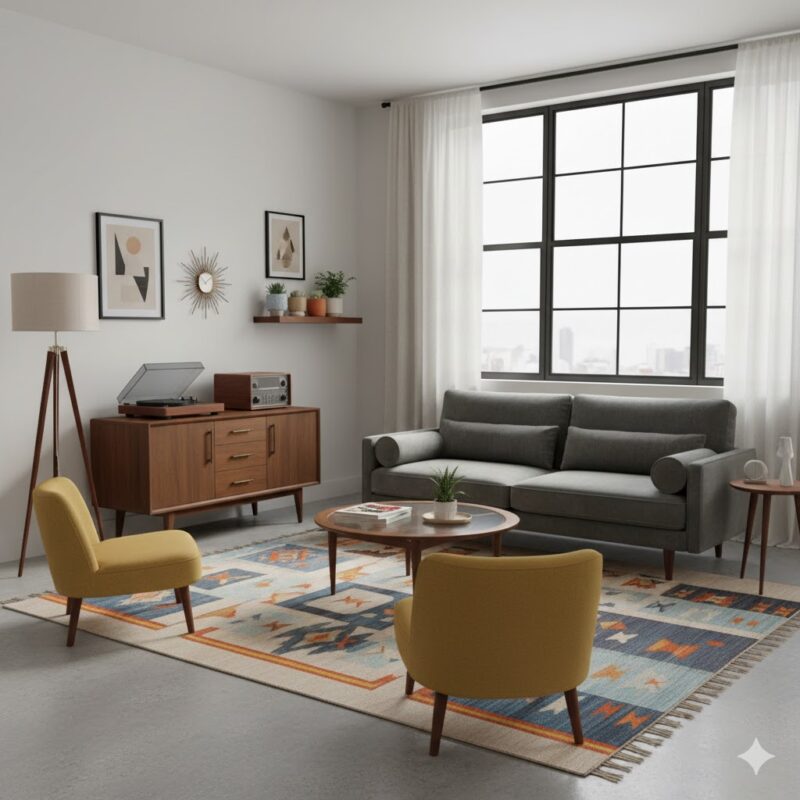
One common mistake people make is using oversized furniture in small rooms. But going too small can make it feel like a dollhouse.
The trick is proportion — furniture that fits the space without overpowering it.
Choose slimmer legs, lower profiles, and pieces that don’t block sightlines. A sofa with exposed legs looks lighter than one that sits flat on the floor.
And always leave breathing room around furniture. Negative space is your friend.
10. Keep Decor Cohesive
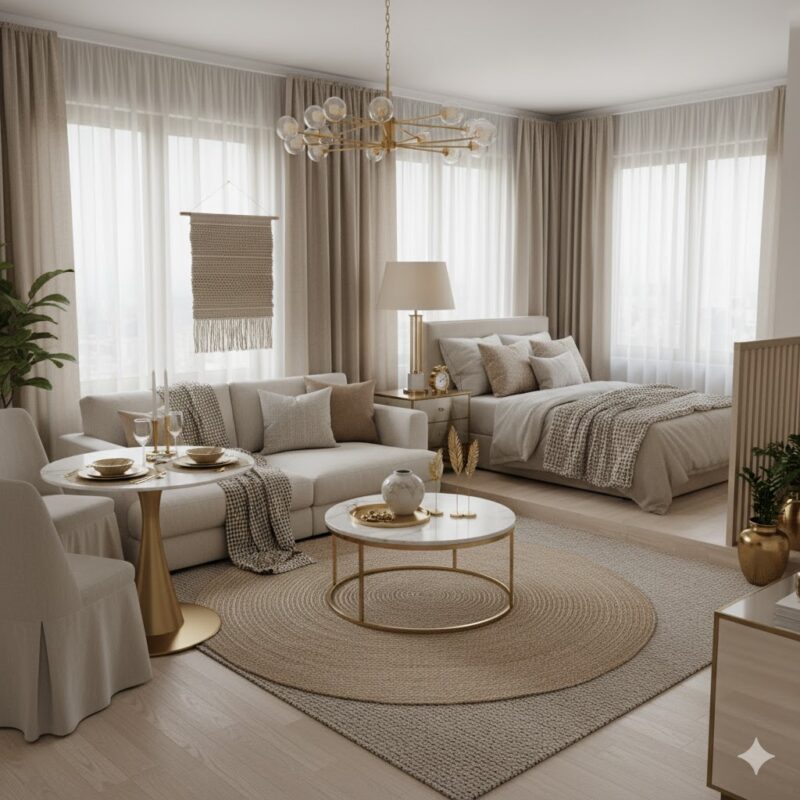
In small homes, too many competing colors or styles make things feel cramped.
Pick a general theme — maybe light woods, whites, and black accents — and stick with it throughout.
You don’t need to make every room identical, but a consistent palette makes spaces flow into each other.
It’s a little like a visual exhale — calm, balanced, and easy on the eyes.
11. Go Big with Art (Yes, Really)
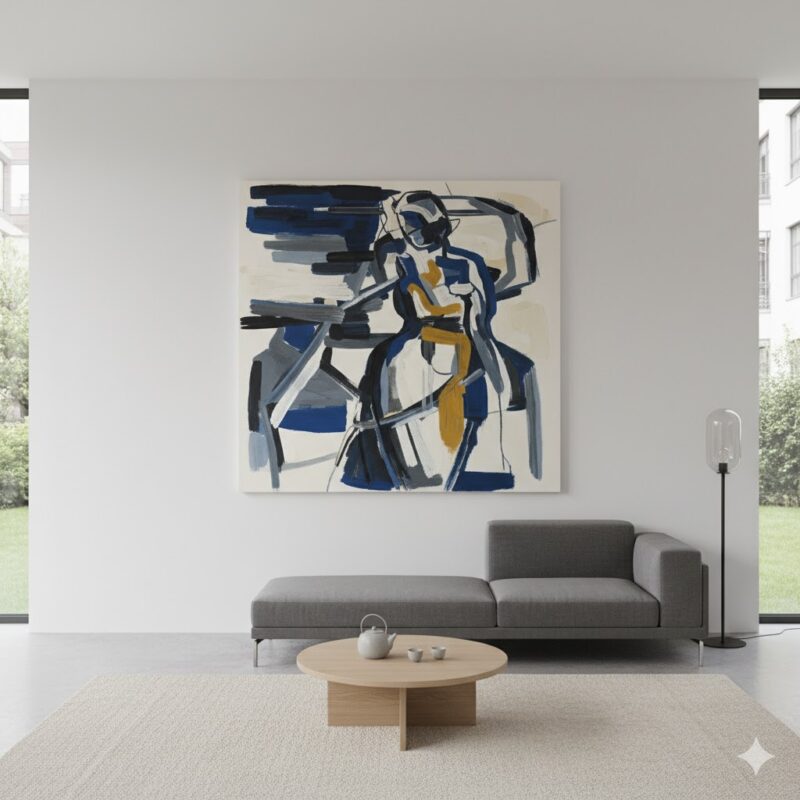
It might sound counterintuitive, but one large piece of art often looks better than a bunch of small ones.
Large-scale art feels intentional — it draws attention up and out, creating the illusion of space.
If your budget’s tight, DIY a big canvas with neutral tones or print a favorite photo as a poster-sized statement.
Small art feels cluttered; one big piece feels confident.
12. Float Your Furniture
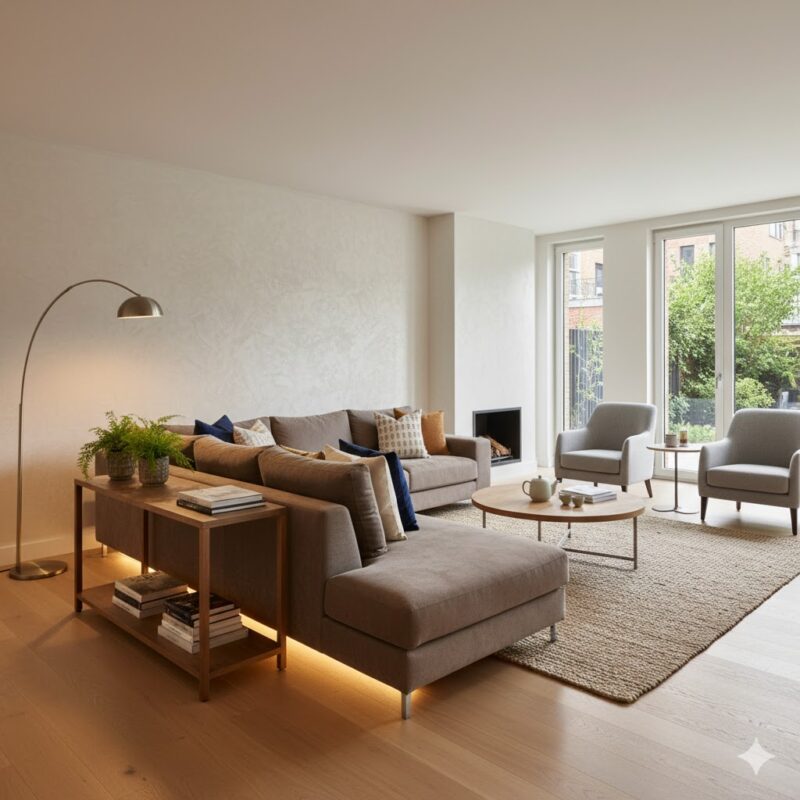
Pushing everything against the walls seems logical when space is tight — but it can actually make a room feel smaller.
Instead, pull furniture slightly away from walls, even just a few inches. It gives the illusion of space and helps define flow.
You can even use area rugs to zone small spaces — like separating a living corner from a dining nook.
It’s one of those small layout tweaks that changes how you experience the whole room.
13. Reflective Finishes Work Wonders
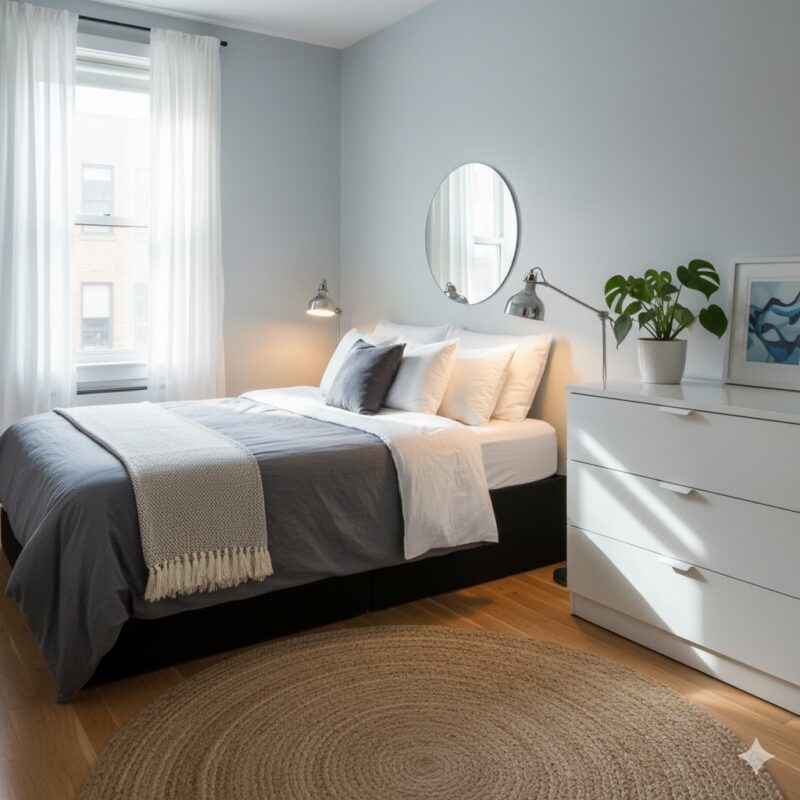
Just like mirrors, shiny surfaces bounce light around and make everything feel brighter.
You don’t have to go full glam — just a few metallic accents, glossy ceramics, or lacquered furniture pieces will do the trick.
Think of it as layering light — subtle reflection that amplifies brightness.
It’s the easiest way to fake a little extra sunlight.
14. Keep Flooring Consistent
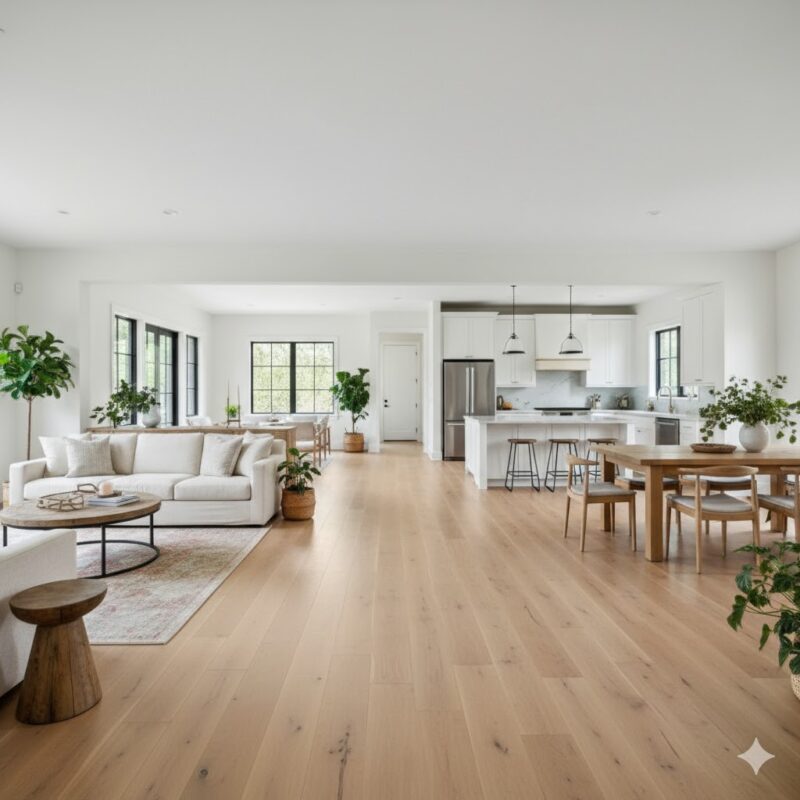
Choppy flooring — tile in one room, carpet in the next — breaks visual flow and makes spaces feel smaller.
If you can, stick to one material throughout the home. Light wood or laminate is perfect, or even a consistent tone of vinyl plank.
When the floor looks unified, the whole home feels bigger, like the rooms are part of one continuous space.
15. Simplify, Then Add a Signature Touch
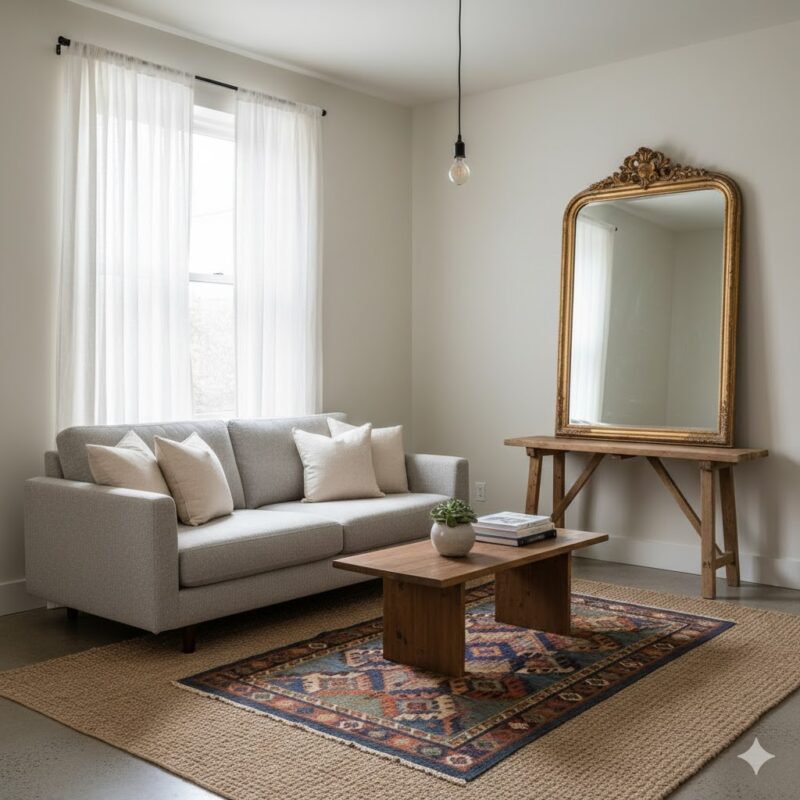
At the end of the day, less really is more in small spaces.
Simplify first — remove the excess, pare down colors, and let the architecture speak. Then, add one or two special touches that feel like you: a vintage rug, a sculptural lamp, maybe a textured wall hanging.
When you give your decor room to breathe, those standout details truly shine.
It’s not about doing more — it’s about doing it better.
Final Thoughts: Small Space, Big Personality
Small homes get a bad rap, but honestly, they can be the most charming. They force creativity. They make you think about what really matters.
When you strip away the clutter and choose things that spark joy (yes, that phrase still holds up), even a tiny apartment can feel like the most peaceful place in the world.
Light walls, mirrors, smart furniture — they’re all tools. But the real trick is warmth. You want your home to feel lived-in, personal, yours.
And if it happens to look twice as big in the process? That’s just a bonus.
Before you go…. Your home decor is a significant financial investment—don’t let an accident, like spills or moving mishaps, ruin your aesthetic peace! Protecting those high-value decor items (especially custom pieces!) requires more than basic coverage; you need a solid home contents insurance policy or specific personal property riders. Finding the best homeowners insurance or renters insurance that covers your unique decor is key to keeping your space beautiful and your wallet safe.
For truly high-value or custom furnishings, specialist companies like Chubb offer comprehensive policies, though their average annual cost may be upward of $9,500 for high-value homes. For standard policies, the national homeowner average is around $2,100 per year, but this varies. Thankfully, renters insurance is much more affordable, often costing just $150 to $300 per year. The key is “scheduled personal property” coverage for your valuables; this can cost as little as $50 to $200 annually per $10,000 in value for art and antiques. National carriers like State Farm, GEICO, Allstate, and Progressive are great starting points for comparison.
Getting a quote is simple and super fast now, so you have no excuse not to check your coverage today.